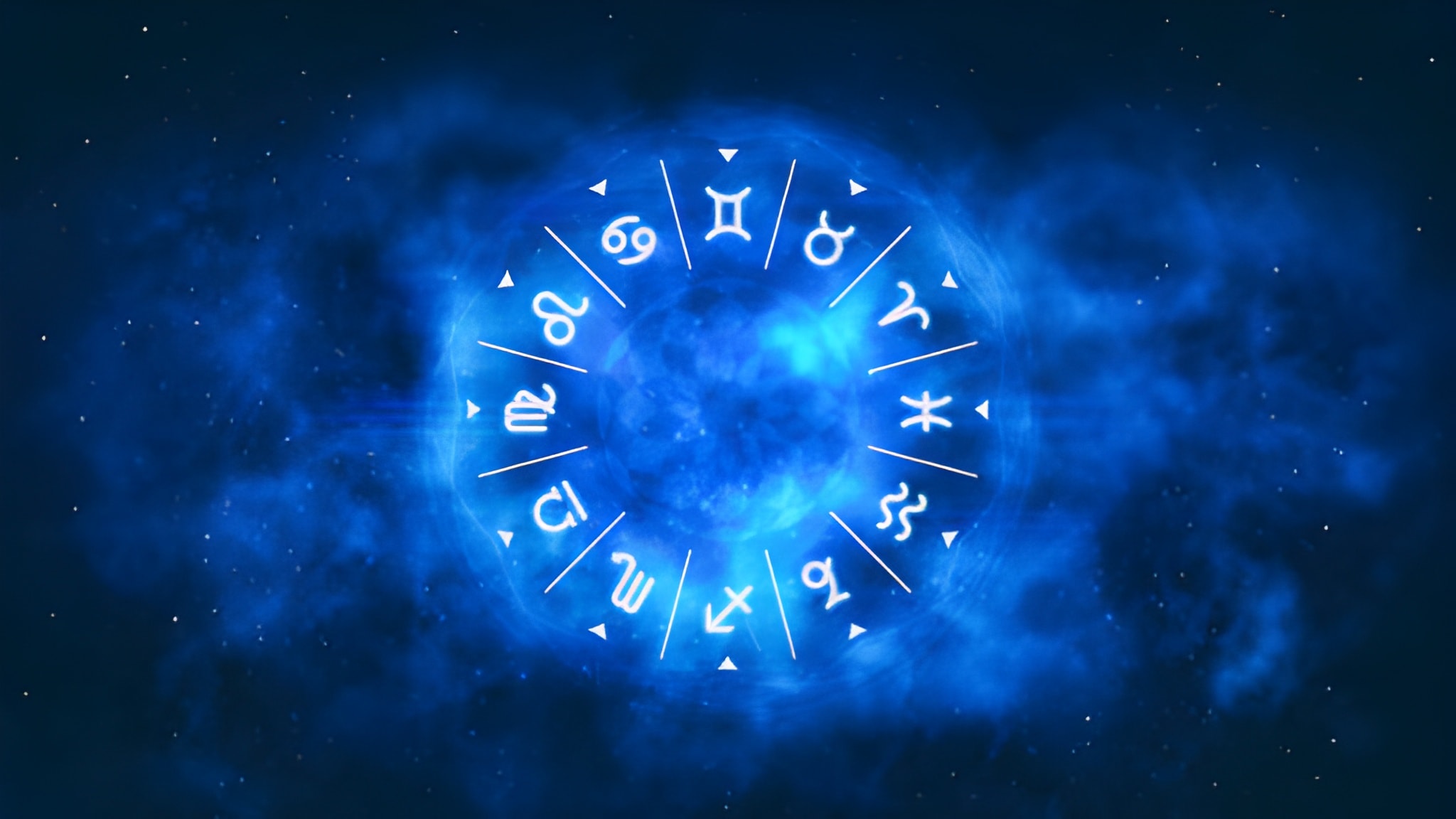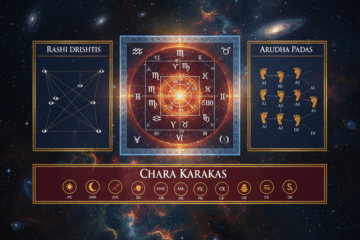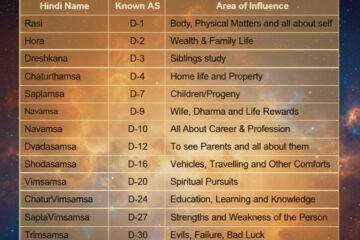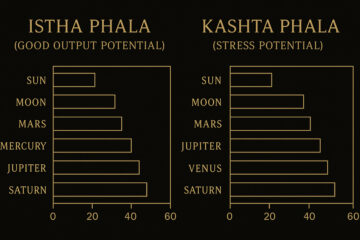Special lagnas in Vedic astrology — especially Hora Lagna (HL), Ghati Lagna (GL), and Indu Lagna (IL) — are targeted lenses for money, authority, and public standing. When we talk about special lagnas in Vedic astrology, we’re asking very direct questions: Who has the capacity to generate wealth? Who holds visible influence? Who appears established in the public eye? Unlike the main Ascendant (Udaya Lagna), these special lagnas are calculated points that act like temporary “alternate ascendants.” You read the chart from them to evaluate wealth flow, leadership, and image.
But here is the rule that keeps you honest: you never throw away the main lagna, Moon-lagna, or Arudha Lagna. These special lagnas are diagnostic overlays, not replacements. You treat each special lagna as if it were a lagna in its own right — check its lord, the 2nd and 11th from it, kendras and trikonas from it — and then you cross-check that story with the birth chart (D1), with Arudha Lagna for image, and with D10 for public role. When these layers repeat the same promise, that’s real. When they contradict each other, you slow down and confirm timing with dashas and transits before saying anything predictive.
Below, we’ll walk through Hora Lagna, Ghati Lagna, and Indu Lagna one by one. We’ll also talk about how to judge wealth, status, and authority without falling into superstition, and why birth-time precision matters when working with special lagnas in Vedic astrology.
Special Lagnas in Vedic Astrology: Why They Matter for Wealth and Status
Classical texts describe multiple reference lagnas beyond the standard Ascendant. Sun-lagna and Moon-lagna help you judge vitality and mind. Arudha Lagna (AL) shows projection and public narrative. The “vishesha lagnas” — Hora Lagna, Ghati Lagna, and Indu Lagna — go even deeper: they isolate specific life questions such as “Can this chart sustain wealth?” or “Will this person command respect and visible authority?”
The method is practical. Once you identify the sign for one of these special lagnas in Vedic astrology, you temporarily pretend that sign is the Ascendant. Then you read houses from there exactly like you would from the natal lagna. You look at the lagna lord, you judge the 2nd and 11th houses from that lagna for money and gains, and you examine kendras (1, 4, 7, 10) and trikonas (1, 5, 9) for stability and blessing. You also check the dignity of that lagna’s lord in Navamsa (D9) to see if the promise is durable or just situational.
Because these lagnas move quickly and respond to math, they are birth-time sensitive. That means: confirm birth time or at least sanity-check the plausibility before you announce “this chart shows wealth” based purely on HL. Always layer with the main Ascendant, Arudha Lagna, and the relevant divisional chart (often D10 for status questions).
Hora Lagna (HL): Wealth, Resources, Material Flow
Purpose: Hora Lagna (HL) is read for financial potential, material comfort, and access to resources. It shows not just “money in theory,” but how easily the native can accumulate and retain wealth.
How to read Hora Lagna: Take the sign where HL falls and treat it as the lagna. Now:
- Judge the HL-lord. Is the HL-lord in its own sign, exalted, Mooltrikona, or at least in a friendly sign? Or is it combust, fallen, or trapped with malefic pressure?
- Check where that HL-lord sits from HL. A strong HL-lord in a kendra (1, 4, 7, 10) or trikona (1, 5, 9) from HL is excellent. It says, “the engine of wealth can function without interruption.”
- Look at the 2nd and 11th houses from HL. The 2nd from HL shows stored resources and liquidity. The 11th from HL shows income, gains, marketplace support, networks that open doors.
When benefic planets (like Jupiter or Venus, assuming they are not functional malefics for that chart) occupy or aspect the 2nd and 11th from HL, wealth generation tends to feel smoother. When harsh or functionally malefic planets dominate those houses from HL, money can still come, but often through grind, obligation, debt cycles, or dependency structures.
Practical tip: Do not read HL alone. Check the standard 2nd lord and 11th lord from the main Ascendant. Check Arudha Lagna for wealth “image” (how rich people assume you are). If HL and Arudha Lagna both show prosperity, and the D9 (Navamsa) of the HL-lord is strong, that’s a strong financial signature. That is how you responsibly interpret special lagnas in Vedic astrology for money questions.
Ghati Lagna (GL): Authority, Rank, and Public Standing
Purpose: Ghati Lagna (GL) is used to assess authority, recognition, social rank, and real-world power. GL tells you who can sit at the decision table — politically, administratively, corporately, or socially.
How to read Ghati Lagna: Take the sign where GL falls as a temporary lagna. Then:
- Study the GL-lord: Is it in a kendra or trikona from GL? Is it dignified (own sign, exalted, friendly sign)? Is it strong in Shadbala, free from combustion, supported by benefics?
- Look especially at the 10th house from GL. That 10th-from-GL position shows public visibility and command. A powerful GL-lord in or aspecting that 10th-from-GL often indicates real influence.
- Note raj yogas or mahapurush-style placements from GL. If a planet becomes angular and dignified from GL, that can mark visible status.
GL shines when you are assessing whether someone is built for leadership, administration, institutional power, or public trust. A strong GL-lord in the 10th, 1st, 4th, or 7th from GL can point to a career where the person is seen, obeyed, or deferred to.
Practical tip: Cross-check GL with Arudha Lagna (public projection) and the D10 chart (career karma and executive function). If GL, Arudha Lagna, and D10 all favor a leadership role — especially during the dasha of the GL-lord — public authority or rank is extremely likely to manifest. If GL looks glorious but D10 is chaotic and Arudha Lagna is weak, that “authority” may come with backlash, controversy, or instability.
Indu Lagna (IL): Comfort, Liquidity, and Financial Ease
Purpose: Indu Lagna (IL) is another wealth-oriented reference point. Where HL (Hora Lagna) can show overall wealth potential, IL is often used to read cash flow, comfort, and the ability to create or preserve financial ease over time.
How to read Indu Lagna: Treat the sign of IL as the lagna. Then:
- Check planets placed in kendras and trikonas (1, 4, 7, 10 and 1, 5, 9) from IL. Benefic, stable occupants here tend to support ongoing prosperity.
- Check planets in houses like the 3rd, 6th, 8th, or 12th from IL. Strong malefics here can indicate obstacles, debt, high effort, or leakage of wealth until maturity and discipline catch up.
- Evaluate the IL-lord’s dignity and its depositor. If the IL-lord is dignified and its depositor is strong in Navamsa, the wealth promises from IL tend to stabilize, not just flash and fade.
Practical tip: Read HL and IL together. If HL and IL both indicate wealth — and the 2nd/11th from the natal Ascendant agree — you’re looking at genuine financial resilience. If HL looks strong but IL looks weak, that might signal that the native can generate money but struggles to retain liquidity or comfort without stress management and planning.
Best Practices When Using Special Lagnas
Now that we’ve looked at Hora Lagna, Ghati Lagna, and Indu Lagna individually, let’s talk technique. These checkpoints will save you from overpromising based on one flattering placement.
1. Birth-Time Sensitivity
HL, GL, and IL can shift quickly. A small birth-time error can move these special lagnas to a different sign, which means you’ll be reading the wrong lagna lord. If birth time is fuzzy, treat all “special lagnas vedic astrology” readings as provisional. Lean harder on stable references: Ascendant, Moon-lagna, Arudha Lagna, and divisional consistency (especially D10 for career questions).
2. Depositor Chains and Navamsa Strength
Whenever you evaluate a special lagna, trace dignity like this: special lagna lord → its sign lord (depositor) → that depositor’s dignity in D9 (Navamsa). A strong depositor in Navamsa gives durability. This is how you know whether apparent wealth or authority will last, or whether it just flares up for one dasha and disappears.
3. Kendras and Trikonas Still Rule
The basic Jyotish rule doesn’t change. Kendras (1, 4, 7, 10) are pillars of manifestation. Trikonas (1, 5, 9) are dharmic, flowing, fortunate houses. If the HL-lord or GL-lord sits powerfully in a kendra or trikona from its special lagna, that’s a major green light. If these lords are buried in dusthanas (6, 8, 12) from their special lagnas and getting hit by malefics, expect delays, blockages, or “power with a price.”
4. Cross-Check, Don’t Isolate
Never answer big life questions from one indicator alone. You must confirm that the pattern repeats. For money questions, compare HL, IL, the 2nd and 11th from the main lagna, and Arudha Lagna. For authority questions, compare GL, Arudha Lagna, the 10th house from D1, and the D10 chart. If the same story shows up in multiple places, that’s karmic confirmation.
5. Dashas Propose, Transits Dispose
Timing still follows the core rule: dashas propose, transits dispose. A strong HL signature doesn’t create wealth the day you discover it. You watch for the HL-lord’s Mahadasha or Antardasha, then you watch transits of slow movers (Saturn, Jupiter, Rahu/Ketu) to confirm when that storyline becomes materially visible. Same with GL and public status. The planet can promise authority, but it often needs a transit hit to make that authority “real” in the world.
6. Software Is a Tool, Not the Guru
Most modern apps and programs (including serious tools used in Jyotish circles) will compute HL, GL, and IL for you. That’s helpful, but don’t stop there. Software does not tell you whether the HL-lord is combust, whether the GL-lord becomes a Yoga Karaka for the natal lagna, or whether the IL pattern is repeated in D9. You still have to read like an astrologer, not like an output reader.
How to Think Through Real Chart Scenarios
Here’s how you apply special lagnas in Vedic astrology in practice:
- Wealth scenario: The Hora Lagna (HL) falls in Taurus. Venus, the HL-lord, sits exalted or in own sign in a kendra from HL. The 11th-from-HL is occupied by benefics and not attacked by functional malefics. Result: strong material promise. During Venus Mahadasha, money and assets tend to consolidate in a way that feels stable rather than erratic.
- Authority scenario: The Ghati Lagna (GL) falls in Leo. The Sun (GL-lord) sits powerfully in the 10th from GL, forming a raj yoga or mahapurush-style signature. Result: public recognition, rank, or command often manifests in Sun-related windows (Sun Antardasha or when slow transits empower the Sun’s position). This is textbook for political, executive, or institutional authority.
- Convergence scenario: Indu Lagna (IL) and Hora Lagna (HL) both point to strong 2nd/11th houses and repeat similar supportive lords. The Navamsa of those lords is also dignified. Result: financial stability is not just “a lucky break,” but a repeating theme. Wealth is likely to accumulate and persist, not just spike and vanish.
When multiple special lagnas in Vedic astrology agree with the main chart and divisional confirmations, you’re not guessing anymore — you’re seeing a consistent karmic pattern. That’s when you can speak with confidence that “money will stabilize in your 30s” or “public authority becomes undeniable around this Mahadasha.”
Important Notes
How accurate are special lagnas if the birth time is slightly off?
Very sensitive. A small shift in birth time can move HL or GL into a different sign, which completely changes the lagna lord you’re reading. If the birth time is uncertain, treat Hora Lagna and Ghati Lagna analysis as exploratory, not definitive. Fall back on sturdier indicators: the main Ascendant, Moon-lagna, Arudha Lagna, and strong repetition across D1 and D10.
Which houses should I check first for wealth or for power?
For wealth, from Hora Lagna (HL) check the HL-lord plus the 2nd and 11th houses from HL. For status and authority, from Ghati Lagna (GL) check the GL-lord, kendras/trikonas from GL, the 10th-from-GL, and interaction with Arudha Lagna and D10. Always trace depositor strength and Navamsa dignity to judge durability.
If HL and the natal 2nd-lord disagree, which wins?
Neither “wins.” If HL promises money but the 2nd-lord from the main lagna is weak, suspect intermittent or externally sourced gains (inheritance, partner, business alliances) instead of lifelong steady self-generated wealth. You then confirm timing with dashas, sub-dashas, and transits.
Can a weak GL still produce authority?
Yes, if other factors carry it. If the GL-lord forms a raj yoga, is exalted in D10, or is strongly placed in kendras from Arudha Lagna, you can still see visible authority. Conversely, a strong GL with terrible D10 can give “title without peace,” meaning recognition with constant pressure or public controversy. Context rules.
Are special lagnas used for timing events?
They can be. The dasha of the HL-lord often correlates with financial movement; the dasha of the GL-lord with authority or recognition. Transits of Saturn, Jupiter, Rahu, and Ketu to the houses tied to HL/GL/IL can trigger visible results. Remember: dashas propose, transits dispose. Special lagnas in Vedic astrology add focus to where results will show up.
FAQ
Which lagna is best for judging money — Hora Lagna or Indu Lagna?
Use both. Hora Lagna (HL) is the classic wealth indicator, but Indu Lagna (IL) is excellent for judging cash flow, comfort, and liquidity. If both HL and IL point to strong 2nd/11th houses and benefic support, and if the HL-lord and IL-lord are strong in Navamsa, that is a legitimate wealth signature. You also confirm with the natal 2nd and 11th for full context.
Should I always check Ghati Lagna for authority questions?
Yes, Ghati Lagna (GL) is designed for authority, status, and rank. But you never stop there. You also analyze Arudha Lagna (public projection), the 10th house and 10th lord from the main Ascendant, and the D10 chart. If GL and the D10 agree, you’re looking at real-world leadership potential, not just theoretical “you could be powerful one day.”
If software gives me HL and GL, am I done?
No. Software gives coordinates, not judgment. You still have to evaluate combustion, depositor strength, functional benefic vs functional malefic rulership, kendras/trikonas from that special lagna, and divisional support. The point of studying special lagnas in Vedic astrology is to synthesize, not to repeat the app output back to the client.
What if HL looks strong but Navamsa looks weak?
That suggests potential wealth but unstable retention. In plain language: “You can make money, but keeping it peacefully may require maturity, boundaries, and better structures.” You’d watch for whether the HL-lord’s Mahadasha coincides with helpful transits (Jupiter support, Saturn stabilizing). If yes, the wealth may consolidate. If not, it may just spike and vanish.
Stay With Much Needed Astro
Much Needed Astro is here for students who want to practice real Jyotish without drama. We teach you how to use special lagnas in Vedic astrology — Hora Lagna for wealth, Ghati Lagna for authority, Indu Lagna for comfort — alongside Arudha Lagna, D10, dashas, and transits. You’ll learn to read public image, money flow, and leadership potential with nuance, not superstition.
If you’re serious about studying real Jyotish, stay with Much Needed Astro — no fluff, no fear-mongering, just clarity you can actually use.
“`



